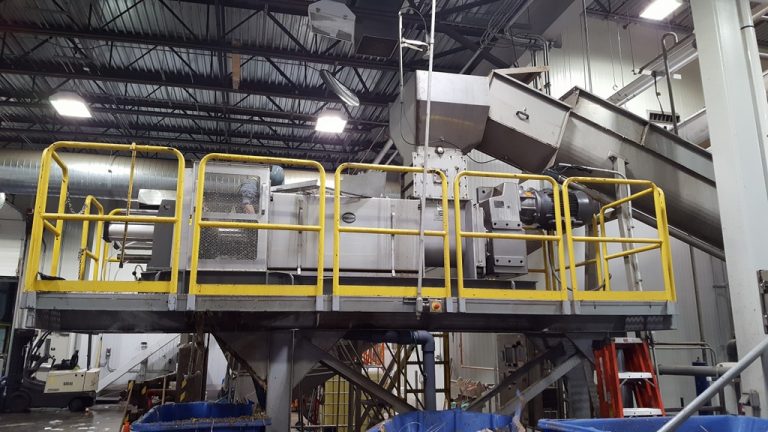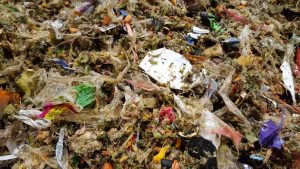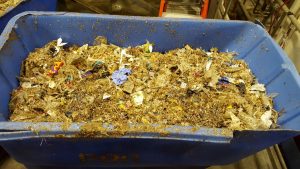Last month’s Pressing News (“Repurposing Food Waste”) discussed the Vincent VDC Dewatering Compactor. Photos from recent trials follow. Below the photos you will find technical references on this food waste processing application.
Here is a one-minute video of the press cake being produced: PRESSING SUPERMARKET WASTE

MODEL VDC-16 INSTALLATION


AS-RECEIVED WASTE AT THE PLANT
PRESS CAPACITY ESTIMATED AT 10 TONS PER HOUR


WASTE AS IT CAME OUT OF THE VDC-16


PRESS CAKE ESTIMATED MOISTURE CONTENT 30-40%
FOOD WASTE REFERENCES
First, some science: Food entering landfills releases methane to the atmosphere, a greenhouse gas that has many more times the impact than the better known greenhouse gas CO (https://www.waste360.com/operations/how-banning-food-waste-landfills-affects-industry).
And now, some statistics: Between 25% to 40% of the food produced in the United States is wasted annually. About 72% of the municipal waste stream is organic waste, which the EPA has deemed the largest generator of methane (https://www.waste360.com/operations/food-waste-bans-can-be-problematic-landfills).
Harvard Law School is even getting into the act; their Food Law and Policy Clinic has released a toolkit for states and municipalities entitled “Keeping Food Out of the Landfill: Policy Ideas for States and Localities”. Harvard Law suggests eight different policy areas states and municipalities can act upon (https://www.biocycle.net/2016/11/10/fresh-look-organics-bans-waste-recycling-laws/).
Harvard’s policy push isn’t novel; the European Union’s Landfill Directive predates US initiatives. The EU’s efforts reduced biodegradable waste entering EU landfills, and this has grown an industry centered around sustainable waste management. It encompasses recycling, composting, and energy generation (https://www.waste360.com/operations/how-banning-food-waste-landfills-affects-industry).
Due to science, statics, and progressive politics, as of December 2016 five states and several larger municipalities had banned food waste entering landfills. That included California; Connecticut; Massachusetts; Rhode Island; Vermont; as well as Austin, Texas; New York, New York; Portland, Oregon; San Francisco, California; and Seattle, Washington (blog.spoileralert.com/food-waste-bans).
In particular, California legislated waste recycling requiring commercial food waste generators to either compost or anaerobically digest the organics (https://www.biocycle.net/2016/11/10/fresh-look-organics-bans-waste-recycling-laws/). California mandates that businesses generating more than four cubic yards of organics per week must either recycle the organics onsite or to subscribe to an organics recycling service.
Economic motivation exists alongside legislation. Typically, lower tipping fees are charged at food waste recycling facilities compared to landfills. According to BioCycle, in 2014 US composting site tipping fees averaged only $36 per ton, while US landfill tipping fees averaged $44 per ton (https://www.biocycle.net/2016/11/10/fresh-look-organics-bans-waste-recycling-laws/).
Vincent is enjoying the new market arising from all of these regulations and studies. We continue to advance our screw press technology. Each new design leads to a more robust machine better equipped to handle a wider range of waste materials.
